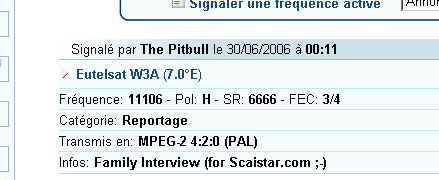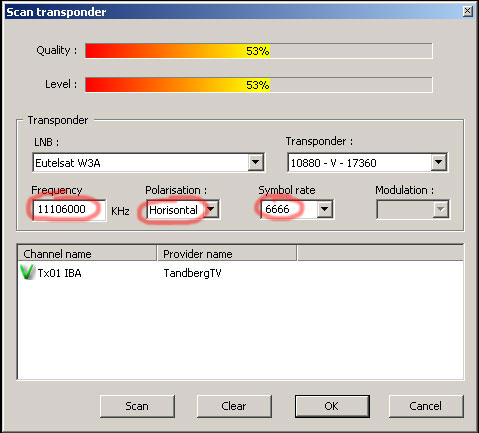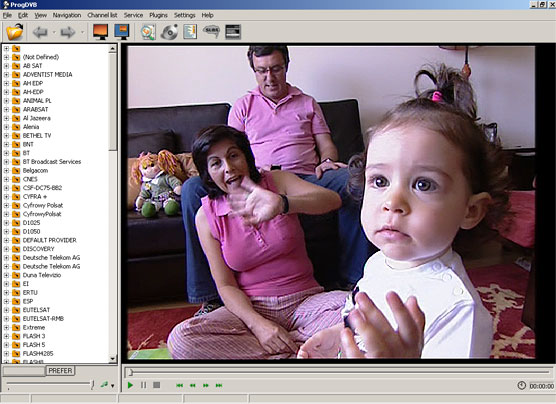
Just someone finds a feed on known sites, try to insert values in your DVB software (after having aimed motor at right satellite) and start scanning
SEARCHING METHODS
Feed search can be effected according various way, each with advantages and disadvantages.
Following, we show you 3 different
mode that introduce some differences in time and equipment.
5) Direct insertion
Simplest and immediate way consists in directly insert known
feed frequencies in DVB software or digital decoder. 
Just someone finds a feed
on known sites, try to insert values in your DVB software (after having aimed motor at
right satellite) and start scanning

Confirm with OK and view the FEED.

In this case we improperly use
term "search" since we are not us to look for feed but get result done by others
(note who has found the feed in the images? ;-).
There are some websites, forum and community with thousand of
users that share their results guaranteeing real time updating. There are straight groups
of users that organize dividing job, reducing times and avoiding double searches. For instance, knowing that at 15:00 begin
a soccer game, before an hour on-line users divide satellites seek and compare results. In this way
single users avoids scanning all satellites and can focus with located and deepen searches.
You can have taste of what happens visiting
Scaistar chat or sites www.satelliweb.com and www.sat-benelux.nl .
ADVANTAGES: This search
mode can be performed with all Skystar models and decoder.
The union strengths guarantees immediate and complete results, above to
lazy users and to whom initially doesn't know from where start.
DISADVANTAGES:
Needs a internet connection.
Poor results in inusual hour, for example at night.
6/9
NEXT >>
FEED INTRODUCTION
1)
What are "feeds"?
2) Feed Archive
3)
Requirement
4) Hunting?
SEARCHING METHODS
5) Direct insertion
6) Charts
based search
7) Blind search
8)
Feed in 4:2:2 format and encrypted
9)
Conclusions